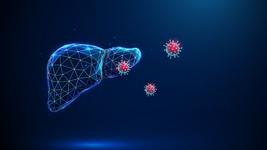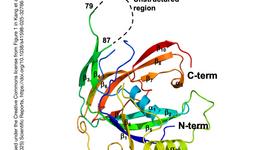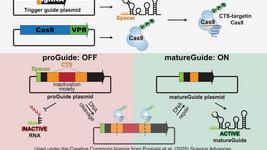CMN Weekly (27 January 2023) - Your Weekly CRISPR Medicine News
By: Gorm Palmgren - Jan. 27, 2023
Top picks
- TALEN gene-edited allogeneic CAR T cells show feasibility and preliminary efficacy for treating multiple myeloma in interim results from the phase 1 UNIVERSAL trial. Of forty-three patients treated with the ALLO-715 therapeutic product, 56% showed an objective response and a median response duration of 8.3 months. While adverse events grade ≥ 3 occurred in 88% of patients, these were mainly haematological conditions (12-70% of patients). Other grade ≥ 3 adverse events occurred as infections in 23% of patients, cytokine release syndrome in 2% and neurotoxicity in 0%. TALEN gene editing was used to abolish the expression of TRAC and CD52, thereby reducing graft-versus-host disease and increasing CAR T cell survival, respectively.
- Exa-cel, the CRISPR based therapeutic for treating sickle cell disease (SCD), has moved closer to the market in the EU. The European Medicines Agency (EMA) has validated a marketing authorisation application from Vertex and CRISPR Therapeutics that has co-developed exa-cel. Exa-cel, formerly known as CTX001, is an autologous treatment that uses CRISPR-Cas9 in the patient's own haematopoietic stem cells, so they produce high levels of fetal haemoglobin (HbF) in red blood cells.
Research
- Jennifer Doudna and colleagues have adapted the RNA-guided RNA-targeting type III CRISPR-Csm complex from S. thermophilus for programmable targeting of transcripts in human cell cultures. The system has significant advantages over RNAi or CRISPR-Cas13 as the RNase-active complexes can knock down cytoplasmic or nuclear-localised transcripts. In contrast, the RNase-inactive complexes can be used for live imaging in cells.
- Researchers in the Netherlands have demonstrated a robust and easy strategy to improve precise gene editing by chemical inhibition of end-joining pathways after CRISPR-Cas9-induced DNA double-strand breaks. The researchers used two chemicals, NU7441 and ART558, to inhibit non-homologous end joining (NHEJ) and polymerase theta-mediated end joining (TMEJ), respectively, thereby increasing the efficiency of homology-driven repair (HDR)-mediated precise gene editing.
Industry
- KSQ Therapeutics announced that Ono Pharmaceutical has acquired its CRISPRomics platform technology in multiple research-stage oncology programs to discover novel therapeutic targets with high selectivity for cancer cells. The CRISPRomics discovery engine enables genome-scale, in vivo validated, unbiased drug discovery across broad therapeutic areas.
- Cellectis has amended specific financial terms of the $20 million convertible note issued by its partner, Cytovia Therapeutics. The payment covers the upfront collaboration consideration provided under the research collaboration and non-exclusive license agreement between Cellectis and Cytovia.
Detection
- A thorough comparison between two Sars-CoV-2 assays on CRISPR and RT-PCR shows that the two methods have comparable performance. The CRISPR test achieved 98% sensitivity and 100% specificity, while the RT-PCR test achieved 100% sensitivity and 100% specificity. However, the CRISPR test showed several advantages, including short assay time, low cost, and no requirement for expensive equipment.
- Chinese researchers have developed a fluorescent aptasensor system for detecting nasopharyngeal carcinoma-derived exosomes. The system is based on combining magnetic nanoparticles, terminal deoxynucleotidyl transferase (TdT), CRISPR/Cas12a, and a nucleic acid aptamer. The TdT can form an ultra-long polynucleotide tail which can bind with multiple crRNA, generating a signal amplification effect. The method exhibited excellent sensitivity and specificity, with a linear range between 500 to 5 × 104 particles mL−1 and a detection limit of 100 particles mL−1.
- Researchers in China have developed a sensitive fluorescent sensing method for detecting thrombin, a biomarker of cardiovascular outcomes. The detection method integrates the DNA walker and CRISPR-Cas12a system to trigger the nuclease's trans-cleavage activity for cyclically cleaving a fluorescently quenched signal probe. The procedure obtained a detection limit for thrombin of 29.5 fM.
- A new digital microfluidic chip (DMF) has been developed for the automated and sensitive detection of pathogens. The method uses CRISPR-Cas12a for target recognition and signal amplification and significantly reduces reagent consumption and analysis time when combined with DMF. The DMF-Cas12a method was applied to assay S. aureus in actual samples.
- Chinese researchers present a CRISPR-Cas12a-based method for universal and sensitive gene mutation detection. The technique detected clinically significant mutations in PTEN R130Q, BRAF V600E, and TP53 R248W, with a detection limit of 0.1%. In addition, in 10 clinical samples, the TP53 R248W mutation was detected with an accuracy of 100%.
Reviews
- Advances in RT-LAMP for COVID-19 testing and diagnosis. This review by American researchers discusses the role of RT-LAMP within the context of other technologies like RT-qPCR and rapid antigen tests. The focus is on progress in sample preparation strategies to enable simplified workflow for RT-LAMP directly from clinical specimens, new challenges with primer and assay design for the evolving pandemic, prominent detection modalities including colourimetric and CRISPR-mediated methods, and translational research and commercial development of RT-LAMP for clinical applications.
News from CRISPR Medicine News
- On Monday, we brought up an interview with Stephanie Cherqui at the University of California San Diego, who recently received a USD 4.8M grant to develop a novel CRISPR therapy for an incurable disease. Dr Cherqui explains how she and her team will use the grant to bring her novel CRISPR therapy for the fatal neurodegenerative disease Friedreich’s ataxia to the clinic.
To get more of the CRISPR Medicine News delivered to your inbox, sign up to the free weekly CMN Newsletter here.
Tags
CLINICAL TRIALS
IND Enabling
Phase I
Phase II
Phase III
Gastric Cancer and Colorectal Cancer, CRC, (NCT07166263)
Sponsors:
Base Therapeutics (Shanghai) Co., Ltd.
Sponsors:
Base Therapeutics (Shanghai) Co., Ltd.
IND Enabling
Phase I
Phase II
Phase III
Relapsed or Refractory Acute Myeloid Leukemia, AML, (NCT06541444)
Sponsors:
Base Therapeutics (Shanghai) Co., Ltd.
Sponsors:
Base Therapeutics (Shanghai) Co., Ltd.
IND Enabling
Phase I
Phase II
Phase III







